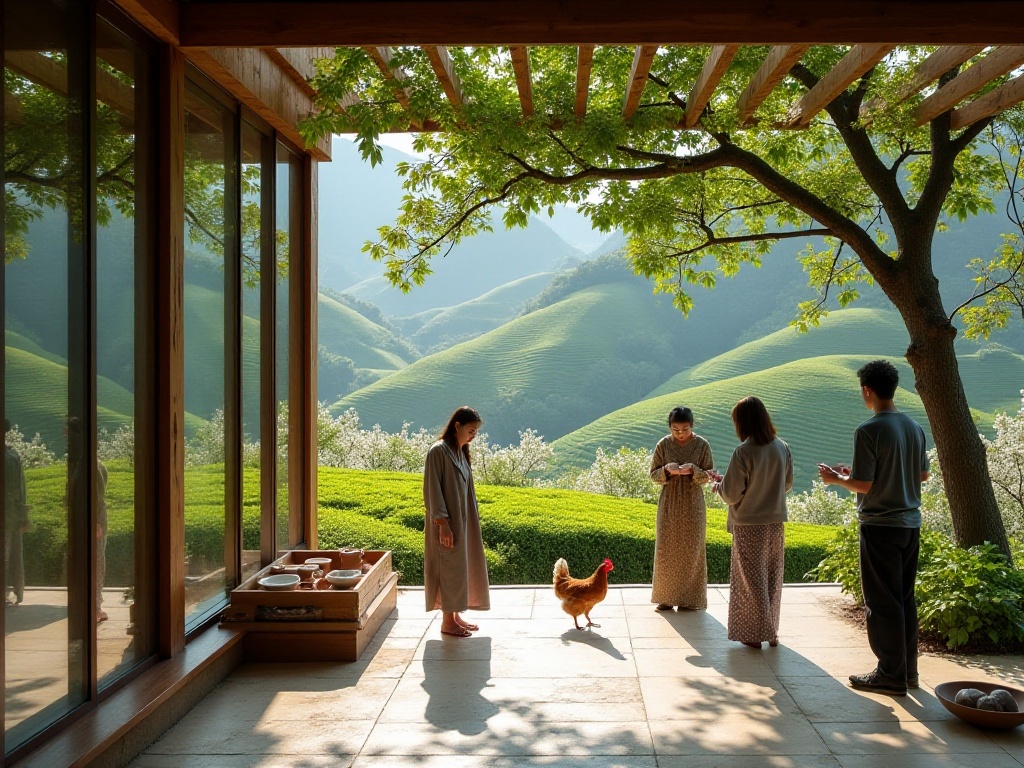
Origins
I remember waking up at a farm in Biei, Hokkaido last winter. Opening the window, I saw distant mountains layered with snow, and endless wheat fields nearby, with snow glistening in the sunlight. Morning light spilled onto the wooden floor, emanating a faint pine scent. The farm owner had already risen and was clearing snow in the courtyard, his figure appearing particularly serene in the morning light. At that moment, I suddenly understood why more and more young people choose to escape the city and embrace rural life.
Here, time seems to stretch. There are no endless subway rides like in the city, no constant phone notifications, and even the WiFi signal is intermittent. But it's precisely these "inconveniences" that gave my mind unprecedented tranquility. Every morning, I would be awakened by the roosters in the farmhouse's backyard, then leisurely get up to enjoy fresh-baked bread and freshly squeezed milk with the host family.
Impressions of Hokkaido
In Hokkaido, each season has its unique charm. In spring, you can stroll through lavender fields, with subtle floral fragrance in the air and purple flowers swaying like the earth's breath. Summer brings golden sunflowers, their heads following the sun like small suns blooming on earth. Autumn brings vibrant fall foliage, with maple and ginkgo leaves shimmering in the sunlight like a colorful coat draped over the land. In winter, the whole landscape is covered in silver, like stepping into a fairy tale.
Furano and Biei represent rural tourism in Hokkaido. They preserve the most pristine agricultural scenery, and in summer, vast lavender fields attract visitors from around the world. In Furano, I met a Tokyo native who had settled there for ten years. He told me it was the natural scenery and leisurely lifestyle that made him give up his high-paying Tokyo job. Now, he runs a small lavender essential oil workshop, and though his income is less than before, seeing beautiful scenery and breathing fresh air daily brings happiness money can't buy.
Statistics show that Furano region received over 2 million visitors in 2023, with international tourists accounting for 40%. Behind these numbers is an increasing yearning for slow living. In Furano, you can experience genuine farm life. I spent a week at an organic farm, learning vegetable cultivation from the farmer. They use traditional farming methods without chemical fertilizers or pesticides, completely following natural laws. Though yields are less than modern farms, the vegetables are exceptionally flavorful.
Biei's landscape is called the "Hokkaido Palette," attracting countless photography enthusiasts. I met a Hong Kong photographer who had come three years in a row. He said every season in Biei is worth capturing. Spring brings golden canola fields, summer has deep purple lavender, autumn wheat fields ripple with golden waves, and winter snow scenes are breathtakingly pure.
In Biei, I stayed at a guesthouse converted from a century-old home. This wooden building preserves traditional Japanese architectural features while incorporating modern facilities. At night, soaking in the outdoor onsen, you can see countless stars. The guesthouse owners are a young couple who moved from Sapporo five years ago for a better environment for their child. Now, they not only run the guesthouse but also operate a small farm product processing workshop, making various jams and pickled goods.
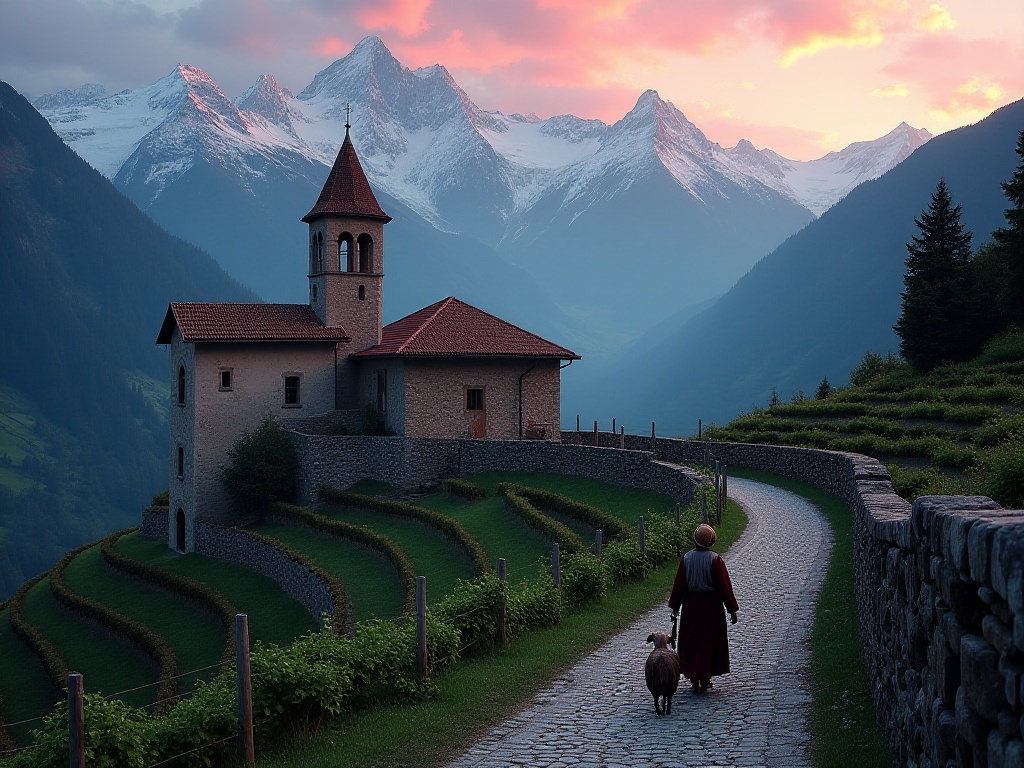
Exploring Akita's Flavors
Heading south from Hokkaido to Akita Prefecture, you find Japan's most exquisite rural life experiences. I stayed with a farming family for three days, joining them in rice planting, tea picking, and cooking. Akita farmhouses all have their own rice fields, following ancestral cultivation methods with every step full of ceremony. Following the host for early morning rice planting taught me farmers' hardships. Though tiring to bend over planting seedlings in the paddy, seeing neat rows of seedlings standing in the field brings indescribable satisfaction.
What impressed me most about Akita farm life was their attitude toward food. Every meal is like a ceremony, from harvesting to cooking to table setting, filled with craftsmanship. In the morning, the host picks fresh vegetables from their garden, then carefully washes and cuts them. Their kitchen has no instant foods; all seasonings are homemade, with miso and soy sauce following ancestral recipes. Even a simple bowl of miso soup is served in fine pottery, decorated with seasonal maple leaves.
In Akita, I also experienced traditional tea ceremony. The tea room was built in the farmhouse's backyard, opening to a bamboo grove. The host told me this tea room has over 80 years of history, built by his great-grandfather. The tea preparation process is very particular, from lighting the fire to boiling water to final tasting, each step has deep meaning. The host said tea ceremony isn't just about drinking tea, but a life attitude teaching people how to maintain inner peace amid busyness.
The host told me Akita Prefecture currently has over 500 farm guesthouses, receiving over 500,000 visitors annually, 70% being domestic Japanese tourists. These numbers reflect Japanese emphasis on and protection of traditional farming culture. In Akita, I also visited several farm product processing workshops. Most are run by young people combining traditional processing techniques with modern marketing concepts to develop many popular products. For example, a rice bran oil workshop run by a post-90s couple uses traditional pressing methods but modern packaging design, with products entering high-end Tokyo supermarkets.
At Akita farms, I also experienced traditional pickling techniques. The host's cellar stored various pickled vegetables including radish, cabbage, and eggplant. These pickles all use ancestral recipes, each with unique flavor. The host said pickling isn't just food preservation but wisdom inheritance. In times before refrigerators, people relied on these methods to store food. Though modern preservation equipment exists now, these traditional skills remain fully preserved.
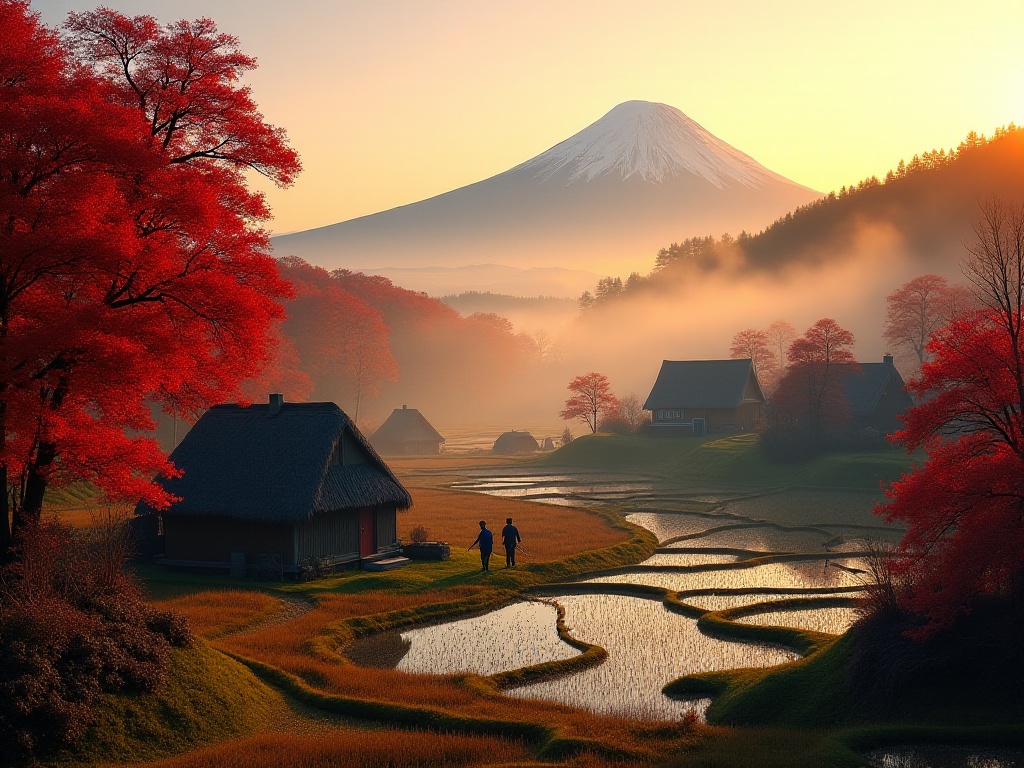
Rural Life Insights
In Japan's countryside, I saw a completely different lifestyle from cities. People here live "slowly" but with wisdom. Each morning, while city people squeeze onto subways, rural folks have already begun their day's work. Though their pace is slow, every minute is fully utilized. For example, farm wives make handicrafts during farming off-seasons, weaving crop stalks into beautiful decorations; young people use online platforms to sell farm products nationwide.
Did you know tourism holds an important position in Japan's rural revitalization strategy? The government provides policy support and invests heavily in rural infrastructure improvement. In Akita Prefecture, the government specially offers farm guesthouse training courses, teaching farmers how to operate guesthouses and communicate with guests. 2023 data shows Japanese rural tourism annual revenue reached 1.2 trillion yen, creating over 100,000 jobs. Behind these numbers are countless stories of young people returning home to start businesses.
In Furano, I met a young person who returned from Tokyo and opened a farm product e-commerce platform. Through this platform, local products are sold not only throughout Japan but exported to other countries. He said modern technology has shortened the distance between rural and urban areas, and young people can absolutely realize their entrepreneurial dreams in rural areas.
In Biei, a young couple converted their ancestral farmhouse into a boutique guesthouse. They preserved the building's traditional appearance but modernized interior facilities. Rooms have high-speed internet and work areas, specially serving city guests wanting to work remotely. This "workation" model is increasingly popular, with many company employees choosing to stay here for a week, both working and relaxing.
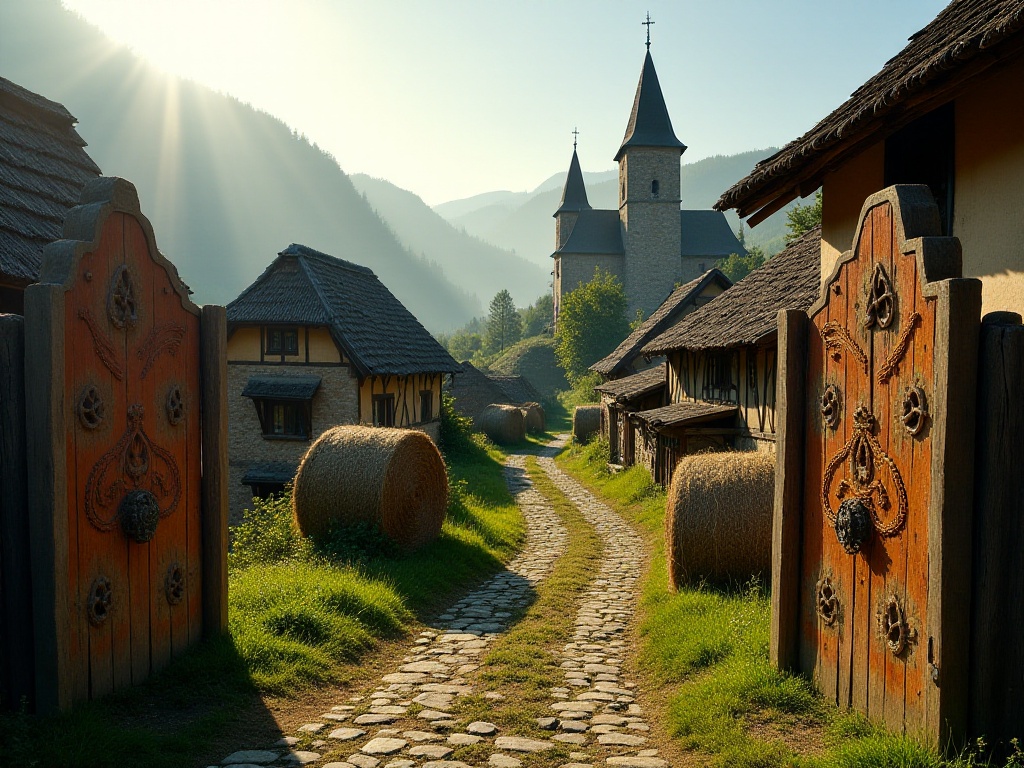
Practical Guide
If you want to experience Japanese rural life, I recommend starting with Hokkaido. It has the most complete tourist facilities and relatively fewer language barriers. You can choose to stay at farm guesthouses, experience farming activities, and taste local cuisine. Most Hokkaido farm guesthouses offer English service, some with Chinese translation. Guesthouse hosts are usually very welcoming and will detail local customs and culture.
When choosing accommodation, research ahead is recommended. Many farm guesthouses have their own special programs - some teach cheese making, others focus on organic vegetable cultivation. Choose based on your interests. Price-wise, farm guesthouses are usually cheaper than city hotels, ranging from 8,000-15,000 yen per night including breakfast.
For transportation, self-driving is recommended. Though Japan's public transportation is well-developed, reaching some remote farms may require multiple transfers. If you don't want to drive, car service is available, with many guesthouses offering pickup service.
Remember, the most important thing about rural tourism is slowing down. Don't chase tourist spots like in cities, but truly integrate into local life rhythm. For example, wake early to watch sunrise with the hosts, help prepare breakfast, or leisurely walk country paths. These seemingly ordinary activities can bring unexpected rewards.
In Biei, I would climb nearby hills every morning to watch sunrise. The sun slowly rising between distant mountains, golden light spilling over wheat fields, the whole earth seeming gilded. Such scenery can never be seen in cities.
In Akita, I learned traditional Japanese confectionery making from farm hosts. Every step from kneading dough to finished product is particular. Though the results might not be as refined as professional shops, the satisfaction of making things yourself is irreplaceable.
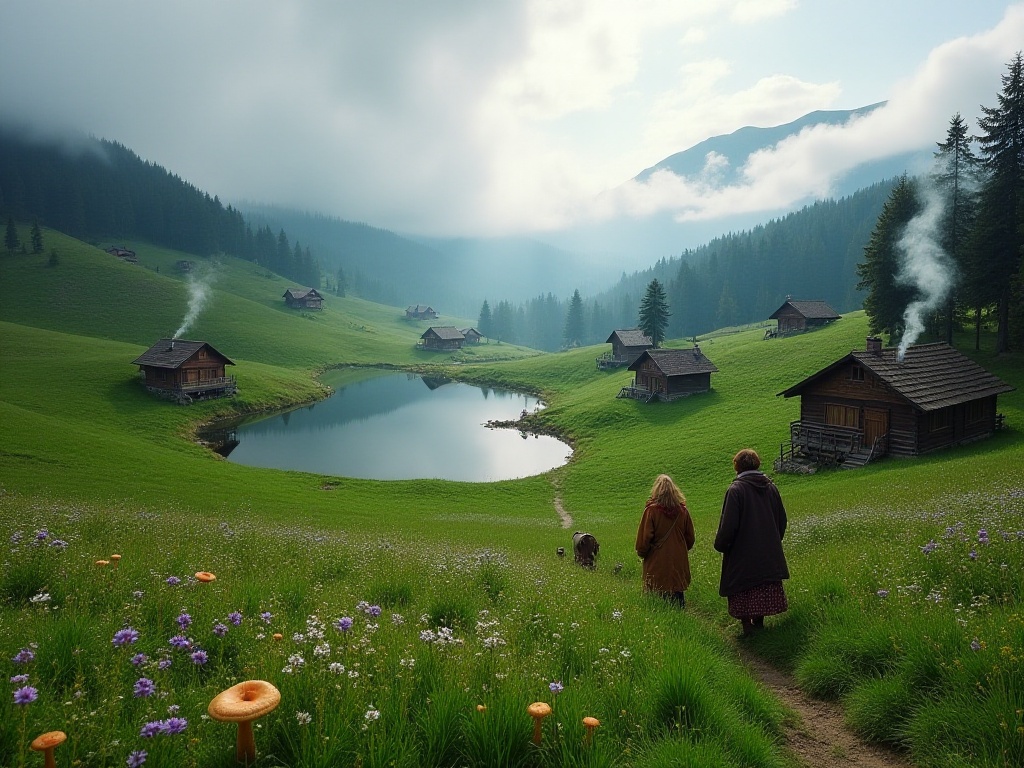
Future Outlook
As urban life pressure increases, rural tourism will surely become an important future tourism direction. According to Japan Tourism Agency predictions, Japan's rural tourism market will reach 2 trillion yen by 2025. This isn't just a number, but represents people's reflection on and changes in lifestyle.
Now, more young people are focusing on rural life. They're not just touring, but seeking new life possibilities. In Furano, I met several young people from big cities considering moving to rural areas. They said city housing prices and work pressure make them feel suffocated, while rural slow living gives them new hope.
The Japanese government actively promotes rural revitalization. For example, establishing special funds supporting young people returning home to start businesses, providing technical training and market connection services. In Akita Prefecture, the government launched an "Agricultural Maker Plan" encouraging young people to develop modern agriculture with innovative thinking. These policies not only drive rural economic development but provide new development opportunities for urban youth.
Have you thought about finding a spiritual sanctuary outside busy city life? Perhaps the answer lies in rural Japan. There's not only beautiful scenery but wisdom worth learning. Let's start this journey seeking inner peace together. On this land, you might discover a completely new lifestyle, one closer to nature and richer in human touch. This isn't just a trip, but a spiritual exploration journey.
Next
Hidden Gems in Rural Vietnam: Rediscovering Serenity Post-Pandemic
As the world emerges from the cocoon of lockdowns, Vietnam's countryside unfurls its wings, revealing a kaleidoscope of hidden treasures. The pandemic's pause has birthed a new era of travel, one that whispers of untrodden paths and authentic encounters. Rural Vietnam, once the backdrop to frenetic city escapes, now takes center stage in a renaissance of rustic allure.
In-Depth Exploration: 10 Hidden Rural Tourism Destinations in Europe Worth Experiencing in 2024, Making Your Travel Unique
A comprehensive overview of global rural tourism destinations, featuring distinctive villages and countryside locations across Europe, North America, and Asia. Explores diverse accommodation options and outdoor activities from Serbia's Zlatibor to Hokkaido, Japan
The Ozark Mountains: A Forgotten Outdoor Paradise in South-Central USA, A Sanctuary Where City Dwellers Can Find Inner Peace
Explore diverse rural tourism destinations worldwide, featuring unique experiences from Native American culture in the US South to traditional villages in Eastern Europe and natural landscapes in Asia-Pacific, highlighting authentic cultural encounters and sustainable travel
Next
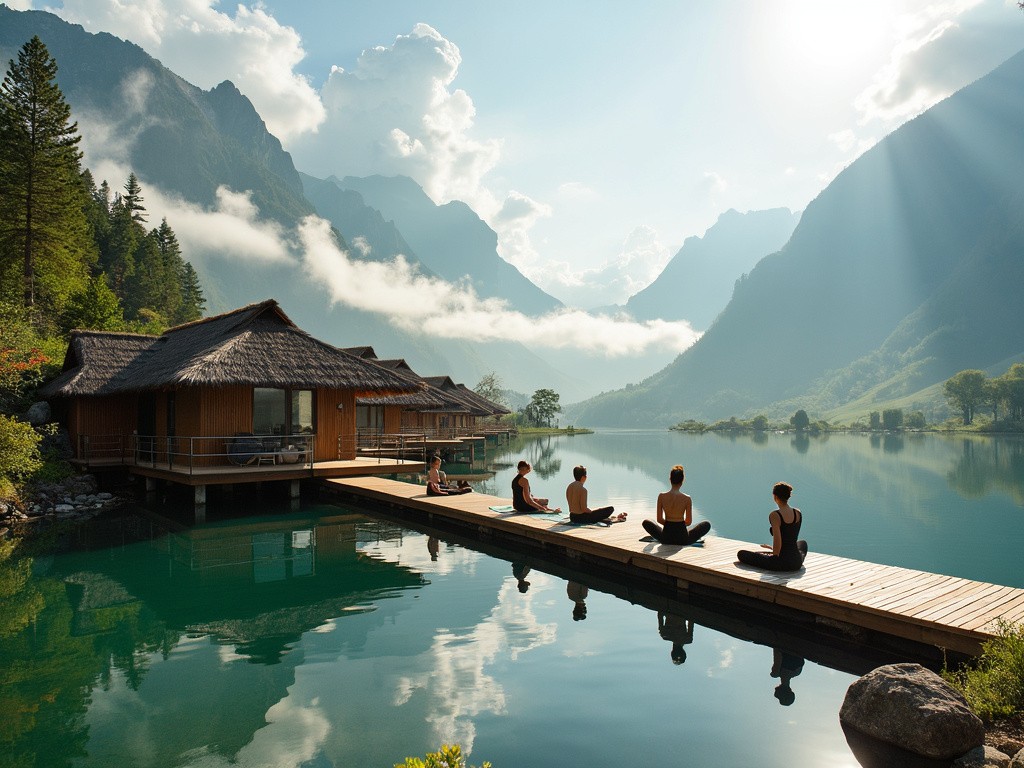
Hidden Gems in Rural Vietnam: Rediscovering Serenity Post-Pandemic
As the world emerges from the cocoon of lockdowns, Vietnam's countryside unfurls its wings, revealing a kaleidoscope of hidden treasures. The pandemic's pause has birthed a new era of travel, one that whispers of untrodden paths and authentic encounters. Rural Vietnam, once the backdrop to frenetic city escapes, now takes center stage in a renaissance of rustic allure.
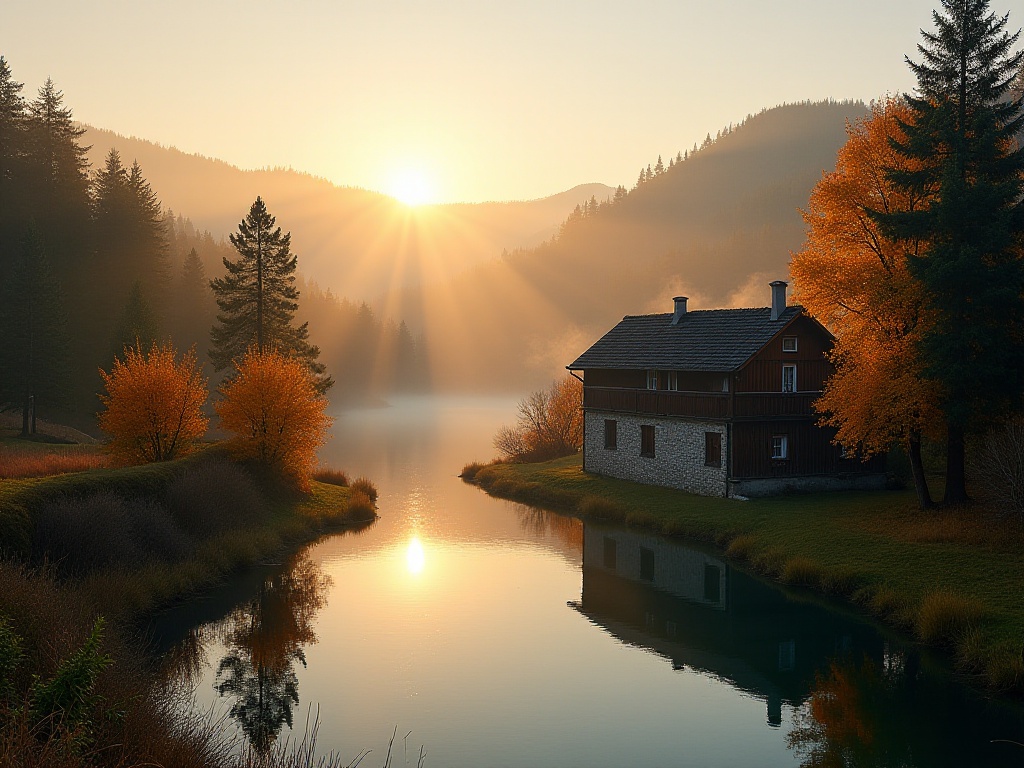
In-Depth Exploration: 10 Hidden Rural Tourism Destinations in Europe Worth Experiencing in 2024, Making Your Travel Unique
A comprehensive overview of global rural tourism destinations, featuring distinctive villages and countryside locations across Europe, North America, and Asia. Explores diverse accommodation options and outdoor activities from Serbia's Zlatibor to Hokkaido, Japan
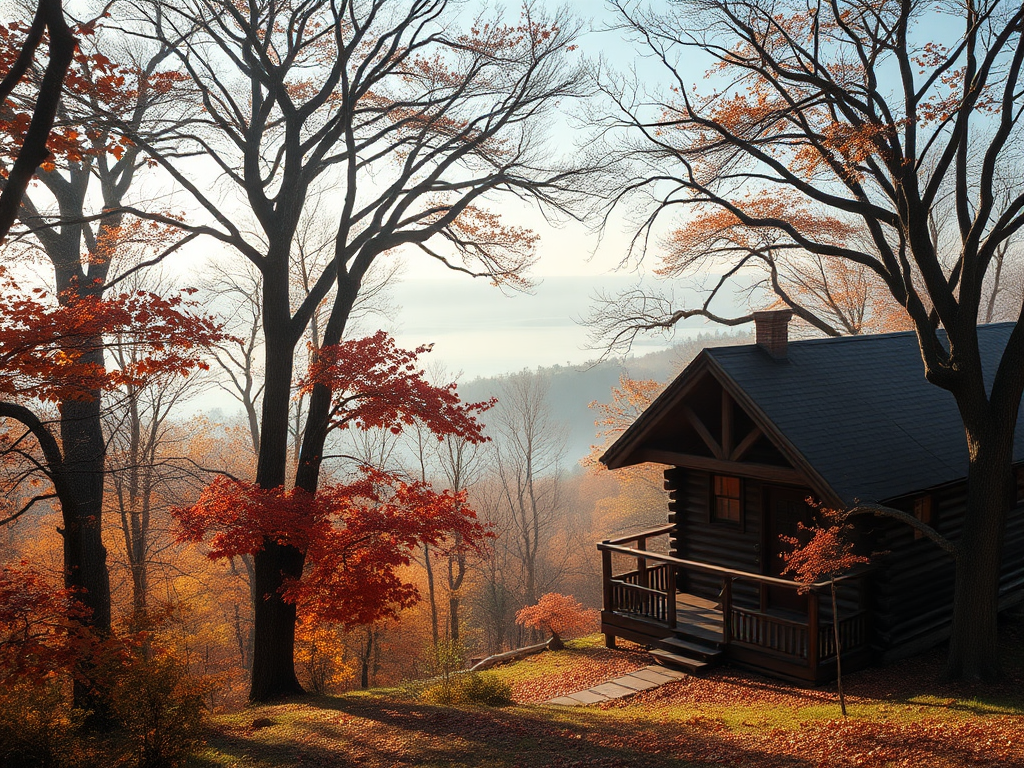
The Ozark Mountains: A Forgotten Outdoor Paradise in South-Central USA, A Sanctuary Where City Dwellers Can Find Inner Peace
Explore diverse rural tourism destinations worldwide, featuring unique experiences from Native American culture in the US South to traditional villages in Eastern Europe and natural landscapes in Asia-Pacific, highlighting authentic cultural encounters and sustainable travel

